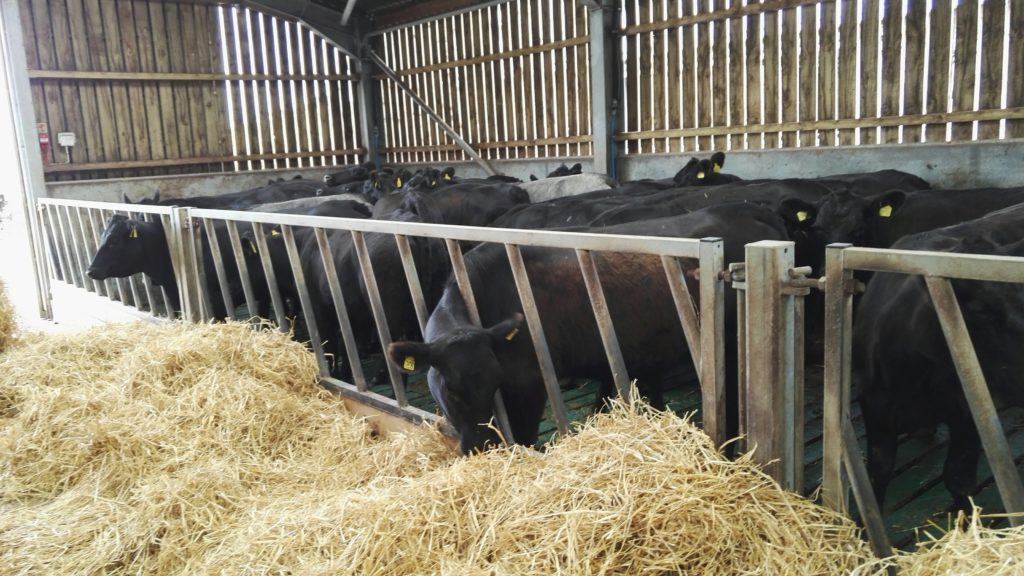Securing straw supplies this year and next
18 July 2018Given the generally lower grass and silage yields this year livestock producers are looking to fill the gap and whole-crop cereals and straw are a key alternative. Arable farmers are also expected to see reduced grain and straw yields, lower cash flow and in some cases cereal crops that are barely fit to combine. Selling more cereals as whole-crop and as straw offers potential benefits to both parties this year if done correctly.
Feed budgeting
For the livestock producer, given high forage prices, the priority is limiting the quantity of straw purchased; especially for low value bedding. Where possible seek to reduce demand through selling surplus stock, finishing stock more quickly and using alternative feed and bedding materials where financially beneficial. The less your business is able to withstand any further rise in forage prices, the more you need to buy at current known prices. If extra borrowings will be needed the earlier bank managers are presented with a well worked out plan the more receptive they will be.
Wholecrop
Where cereal crops are heading early and grain yield and quality are looking doubtful then cutting as whole-crop may prove more attractive than combining. The benefits for the arable farmer include; savings in combining and drying costs, early payment and cash-flow and early entry for a following crop; oilseed rape or a forage catch crop such as stubble turnips. The downsides include a loss of some further nutrients and organic matter from the straw component exported.
With feed and forage prices moving quickly at present and the feed value of the crops uncertain given the variability in grain content it is important that the value of the crop is determined as accurately as possible. Weighing crops over a weighbridge coupled with independent feed analysis to assess relative feed value can help achieve this although there are limitations in obtaining a representative sample from forage which must be understood by both parties.
Cost benefit of baling more straw
Straw yields per hectare are expected to be lower this season so the main choice facing arable farmers is whether to increase the proportion of straw baled; weather permitting.
For the arable producer there is a growing recognition that selling straw off-farm brings with it significant but hard to quantify costs including; loss of nutrients – particularly P&K, risk of delay to autumn sowing, increased soil compaction and loss of organic matter and associated soil structure.
This is an exceptional year and encouraging arable farmers to bale more straw than normal will require;
- A straw price high enough to justify the costs of removal which may be significantly higher than widely understood. Each arable farmer needs to determine this for themselves given the longer term benefits of incorporating straw. Straw prices are higher than they were at the same point a year ago so there is a much stronger price signal to bale before harvest. For arable farmers an increase in straw income could make a big difference to maintaining cash flow in the face of smaller cereal crops.
- Getting the straw baled quickly – ensuring the balers go in behind the combine is essential to allay fears of delayed sowings, though this will be very dependent on the weather at harvest.
- Taking steps to protect soil structure – baling contractors should be encouraged to use lower pressure tyres and smaller tractors to accumulate bales and keep trailers on the tramlines. Returning muck in exchange for straw where proximity allows helps arable soils retain organic matter and nutrients.
Extra time and investment will be needed to get this right. This season is unlikely to be the last when straw is in short supply given the growing use of straw for bio-energy and arable farmers desire to boost straw incorporation. Therefore improvements made this year to make more efficient use of straw and allow straw to be baled while protecting soil structure are likely to bring significant payback both this year and into the future.
If you would like to share this article with a friend then you can download a pdf of it here.
Sign up to the FAS newsletter
Receive updates on news, events and publications from Scotland’s Farm Advisory Service

